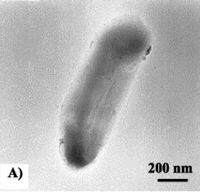User:Merrillh: Difference between revisions
| Line 41: | Line 41: | ||
"[http://www.pacificmmc.org/pdf/Peritonitis_Secondary_to_Multiple_Full_thickness_Jejunal_Wall_Perforations_in_a_California_Sea_Lion_Mulvany_Lawler.pdf]" Mulvany, Elisabeth, et al. Peritonitis secondary to multiple, full-thickness jejunal wall perforations in a California Sea Lion. Marine Mammal Pathology, 2010. Volume 1. | "[http://www.pacificmmc.org/pdf/Peritonitis_Secondary_to_Multiple_Full_thickness_Jejunal_Wall_Perforations_in_a_California_Sea_Lion_Mulvany_Lawler.pdf]" Mulvany, Elisabeth, et al. Peritonitis secondary to multiple, full-thickness jejunal wall perforations in a California Sea Lion. Marine Mammal Pathology, 2010. Volume 1. | ||
"[http://www.ncbi.nlm.nih.gov/pmc/articles/PMC2775873/]" Myung, D.S., et al. Primary Shewanella algae Bacteremia mimicking Vibrio Septicemia. Journal of Korean Medical Science, 2009. Volume 24(6): 1192-1194. | |||
"[http://www.sciencedirect.com/science/article/pii/S0013468607003453]" Konishi, Y., et al. Microbial deposition of gold nanoparticles by the metal-reducing bacterium Shewanella algae. Electrochimica Acta, 2007. Volume 53(1): 186-192. | "[http://www.sciencedirect.com/science/article/pii/S0013468607003453]" Konishi, Y., et al. Microbial deposition of gold nanoparticles by the metal-reducing bacterium Shewanella algae. Electrochimica Acta, 2007. Volume 53(1): 186-192. | ||
Revision as of 20:38, 21 April 2013
Classification
Domain: Bacteria
Phylum: Proteobacteria
Class: Gamma Proteobacteria
Order: Alteromonadales
Family: Shewanellaceae
Genus: Shewanella
Species
Shewanella algae
|
NCBI: Taxonomy |
Description and Significance
Describe the appearance, habitat, etc. of the organism, and why you think it is important.
Genome Structure
Describe the size and content of the genome. How many chromosomes? Circular or linear? Other interesting features? What is known about its sequence?
Cell Structure, Metabolism and Life Cycle
Interesting features of cell structure; how it gains energy; what important molecules it produces.
Ecology and Pathogenesis
Habitat; symbiosis; biogeochemical significance; contributions to environment.
If relevant, how does this organism cause disease? Human, animal, plant hosts? Virulence factors, as well as patient symptoms.
References
"[1]" Beleneva, Irina A., et al. Biochemical and pathogenic properties of the natural isolate of Shewanella algae from Peter the Great Bay, Sea of Japan. Journal of Invertebrate Pathology, 2009. Volume 102: 250-255.
"[2]" Holt, H.M., et al. Shewanella algae and Shewanella putrifaciens: clinical and microbiological characteristics. Clinical Microbioly and Infection, 2005. Volume 11: 347-352.
"[3]" Mulvany, Elisabeth, et al. Peritonitis secondary to multiple, full-thickness jejunal wall perforations in a California Sea Lion. Marine Mammal Pathology, 2010. Volume 1.
"[4]" Myung, D.S., et al. Primary Shewanella algae Bacteremia mimicking Vibrio Septicemia. Journal of Korean Medical Science, 2009. Volume 24(6): 1192-1194.
"[5]" Konishi, Y., et al. Microbial deposition of gold nanoparticles by the metal-reducing bacterium Shewanella algae. Electrochimica Acta, 2007. Volume 53(1): 186-192.
"[6]" Ogi, Takashi, et al. Recovery of indium from aqueous solutions by the Gram-negative bacterium Shewanella algae. Biochemical Engineering Journal, 2012. Volume 63: 129-133.
"[7]" Vogel, Birte F., et al. Homogeneity of Danish Environmental and Clinical Isolates of Shewanella algae. Applied Environmental Microbiology, 2000. Volume 66(1): 443-448.
Author
Page authored by Deonte Swift and Hannah Merrill, students of Prof. Jay Lennon at Michigan State University.
<-- Do not remove this line-->

